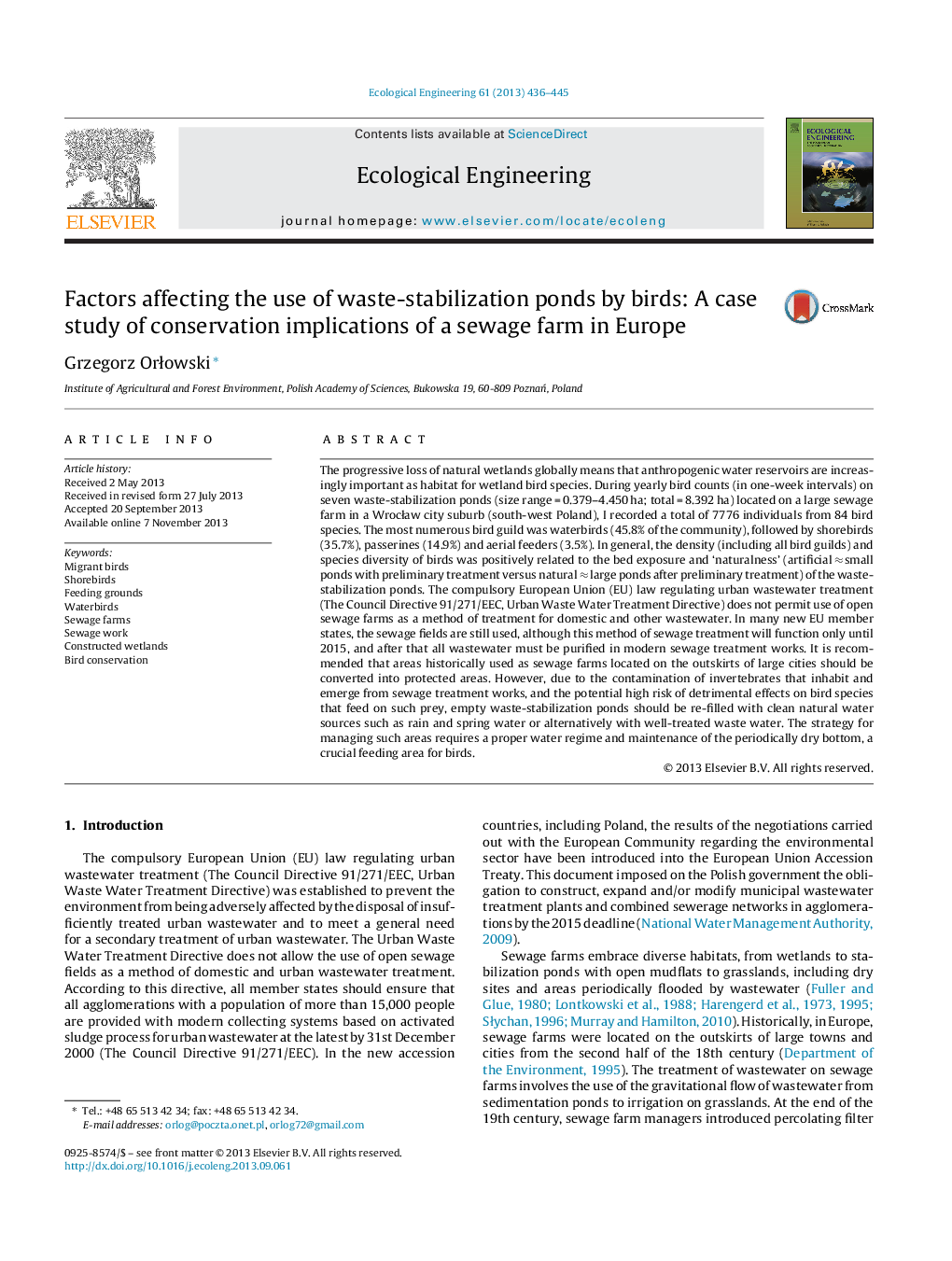| Article ID | Journal | Published Year | Pages | File Type |
|---|---|---|---|---|
| 4389507 | Ecological Engineering | 2013 | 10 Pages |
The progressive loss of natural wetlands globally means that anthropogenic water reservoirs are increasingly important as habitat for wetland bird species. During yearly bird counts (in one-week intervals) on seven waste-stabilization ponds (size range = 0.379–4.450 ha; total = 8.392 ha) located on a large sewage farm in a Wrocław city suburb (south-west Poland), I recorded a total of 7776 individuals from 84 bird species. The most numerous bird guild was waterbirds (45.8% of the community), followed by shorebirds (35.7%), passerines (14.9%) and aerial feeders (3.5%). In general, the density (including all bird guilds) and species diversity of birds was positively related to the bed exposure and ‘naturalness’ (artificial ≈ small ponds with preliminary treatment versus natural ≈ large ponds after preliminary treatment) of the waste-stabilization ponds. The compulsory European Union (EU) law regulating urban wastewater treatment (The Council Directive 91/271/EEC, Urban Waste Water Treatment Directive) does not permit use of open sewage farms as a method of treatment for domestic and other wastewater. In many new EU member states, the sewage fields are still used, although this method of sewage treatment will function only until 2015, and after that all wastewater must be purified in modern sewage treatment works. It is recommended that areas historically used as sewage farms located on the outskirts of large cities should be converted into protected areas. However, due to the contamination of invertebrates that inhabit and emerge from sewage treatment works, and the potential high risk of detrimental effects on bird species that feed on such prey, empty waste-stabilization ponds should be re-filled with clean natural water sources such as rain and spring water or alternatively with well-treated waste water. The strategy for managing such areas requires a proper water regime and maintenance of the periodically dry bottom, a crucial feeding area for birds.
